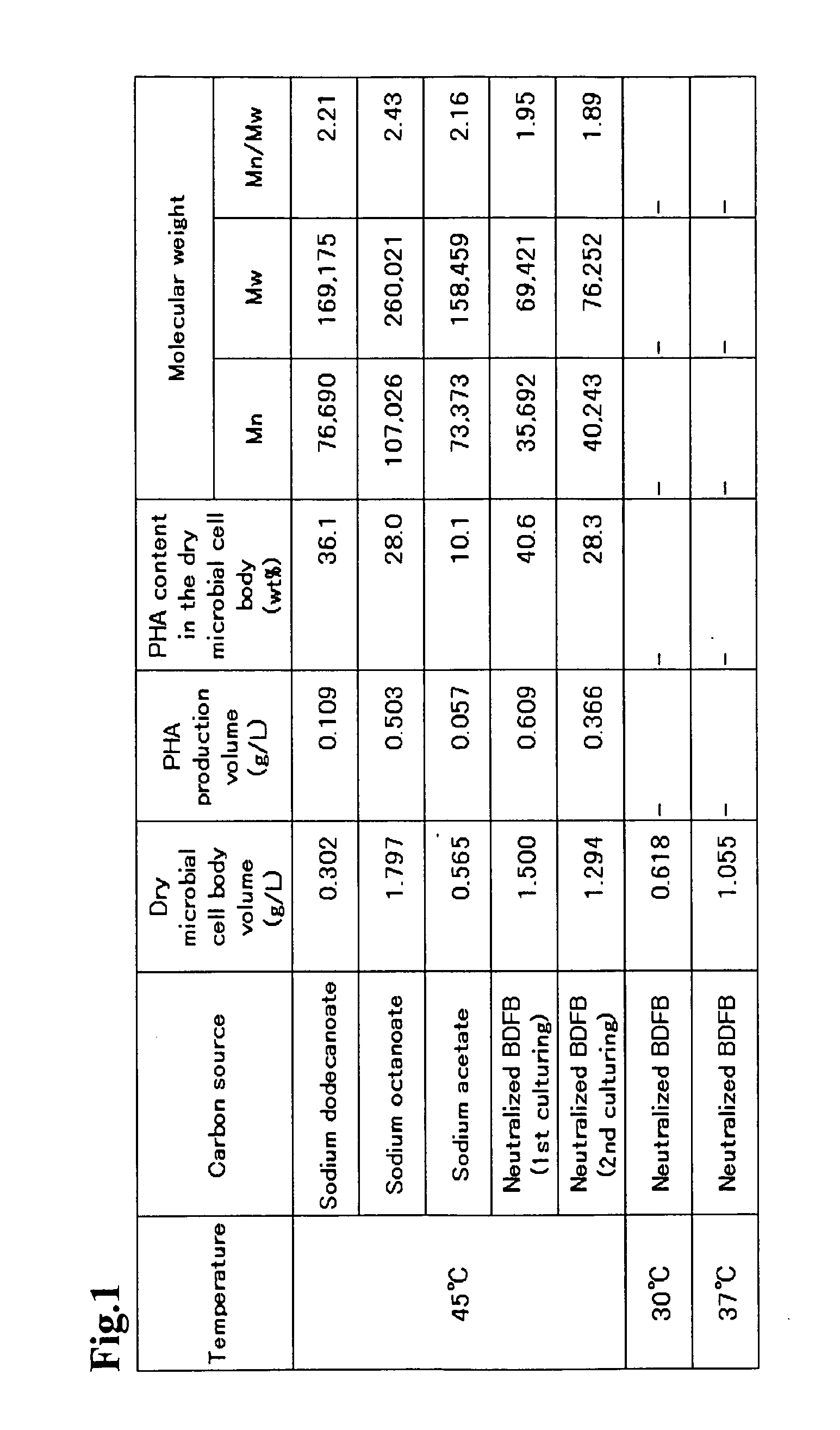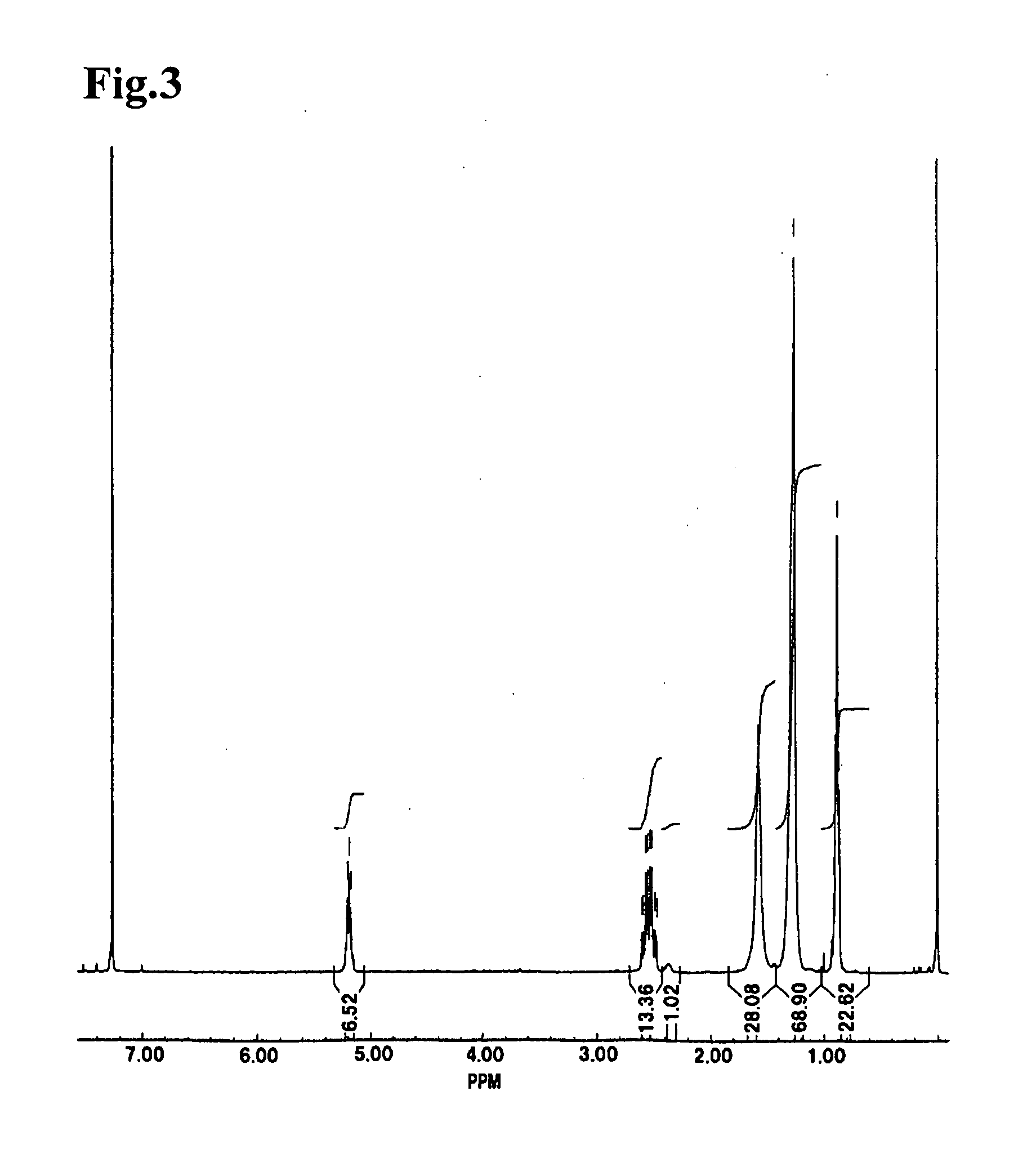Microorganism capable of producing polyhydroxyalkanoate, polyhydroxyalkanoate synthase, and gene encoding the same
- Summary
- Abstract
- Description
- Claims
- Application Information
AI Technical Summary
Benefits of technology
Problems solved by technology
Method used
Image
Examples
example 1
[0119]The inventors isolated a PHA-producing bacterium from the periphery of an apparatus for producing biodiesel fuel (BDF) according to the following method, and identified this strain.
[0120]
[0121]Specifically, dirt that was found at the periphery of an apparatus for producing BDF (like floor, drain outlet and side face of wastewater tank) was sampled with a spatula and the sample was put into 10 mL of sterile water and the product was subjected to centrifugal separation (1000×g) at room temperature for 3 minutes to obtain supernatants. 100 μL of the supernatants was inoculated into 50 mL of MS medium containing 1 weight % of BDFB (neutralized BDFB) obtained by neutralizing with sulfuric acid and the product was subjected to enrichment culture at 45° C. for 3 days. 100 μL of the culture solution was added to 50 mL of MS medium containing I weight % of another neutralized BDFB to culture bacteria at 45° C. After streaking the culture solution on an NR agar plate medium and culturin...
example 2
PHA Production by Pseudomonas sp. SG4502
[0132]PHA was produced, using SG4502 isolated and identified in the above Example 1. By changing the type of a carbon source to be added to a culture medium in this operation, PHA production volume, PHA molecular structure, molecular weight and compositions (monomer composition ratio) were compared and discussed by carbon source.
[0133]Specifically, after a frozen SG4502 was inoculated into 2 mL of NR medium to culture bacteria at 45° C. for 8 hours, the culture solution was inoculated into another 100 mL of NR medium and the product was subjected to shaking culture overnight. 60 mL of the culture solution was added to 3 L Erlenmeyer flask (IWAKI) containing 1.2 L of MS medium and the product was subjected to shaking culture at 45° C., 37° C. and 30° C. 1% (wt / vol) carbon source was added to the 3 L Erlenmeyer flask when the culturing started and 12, 24 and 36 hours elapsed, and the carbon source added was sodium dodecanoate, sodium octanoate, ...
example 3
Cloning of PHA Synthase Gene of Pseudomonas sp. SG4502
[0147]PHA synthase of SG4502 was cloned according to the following steps.
[0148](1) Preparation of Chromosomal DNA of Pseudomonas sp. SG4502
[0149]First, SG4502 was cultured in 2 mL of sterilized NR culture solution at 45° C. overnight. 100 μL of the culture solution was put into 2 mL of another NR medium and the product was subjected to shaking culture at 45° C. until turbidity of the culture solution (absorbance: 600 nm) reached 0.7. After the culturing was completed, a microbial cell body was separated from the culture solution by centrifugal separation at a speed of 7000 rpm for 10 minutes and 100 μL of chromosomal DNA (120 ng / μL of DNA concentration) was prepared by DNeasy Blood & Tissue Kit (QIAGEN).
[0150](2) Obtaining a DNA Fragment Containing PHA Synthase Gene
[0151]Next, in several known PHA synthase genes, two conserved regions were selected and DNA base sequence (polynucleotide sequence) encoding the conserved regions wer...
PUM
| Property | Measurement | Unit |
|---|---|---|
| Temperature | aaaaa | aaaaa |
| Fraction | aaaaa | aaaaa |
| Fraction | aaaaa | aaaaa |
Abstract
Description
Claims
Application Information
 Login to View More
Login to View More - R&D
- Intellectual Property
- Life Sciences
- Materials
- Tech Scout
- Unparalleled Data Quality
- Higher Quality Content
- 60% Fewer Hallucinations
Browse by: Latest US Patents, China's latest patents, Technical Efficacy Thesaurus, Application Domain, Technology Topic, Popular Technical Reports.
© 2025 PatSnap. All rights reserved.Legal|Privacy policy|Modern Slavery Act Transparency Statement|Sitemap|About US| Contact US: help@patsnap.com



